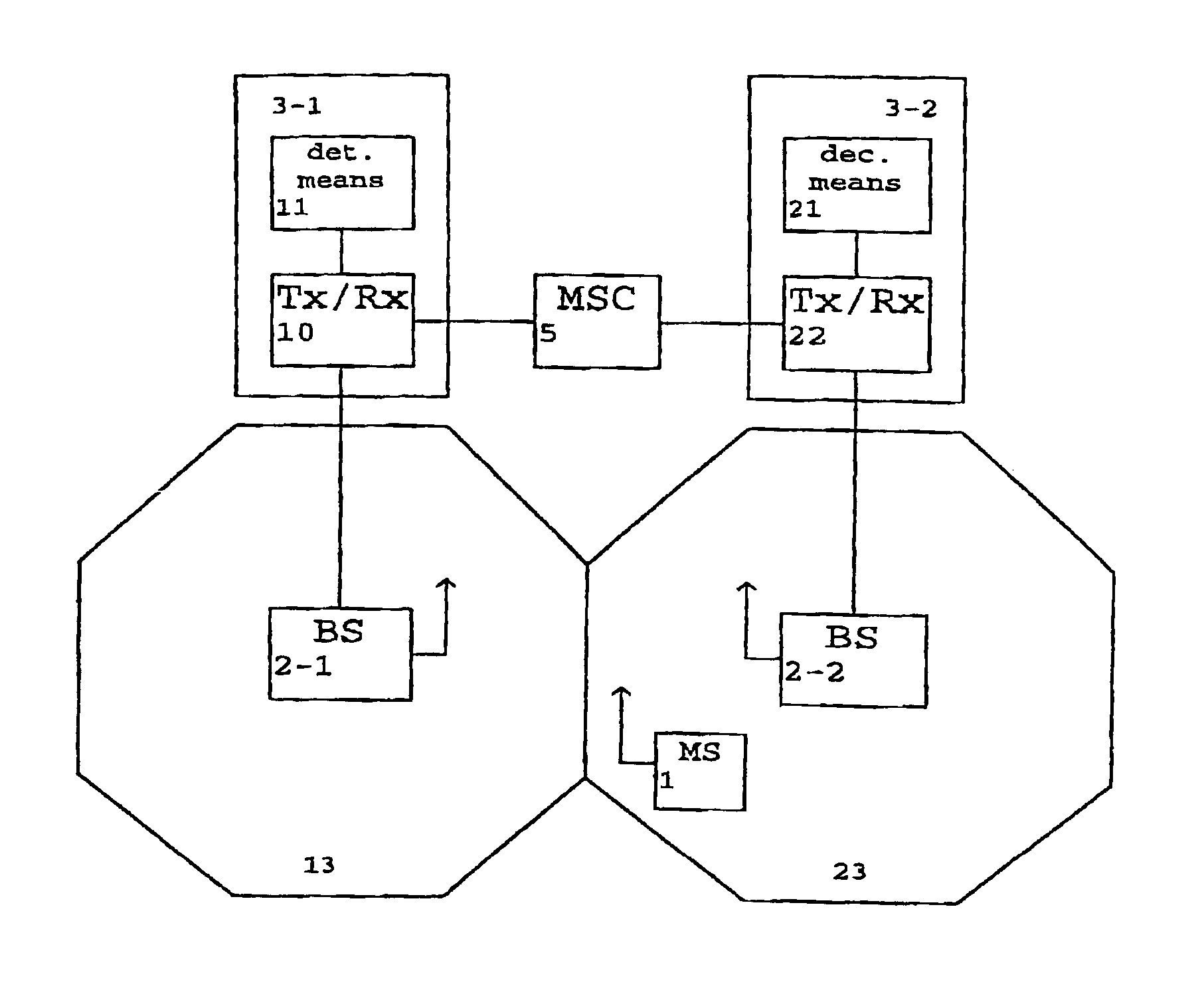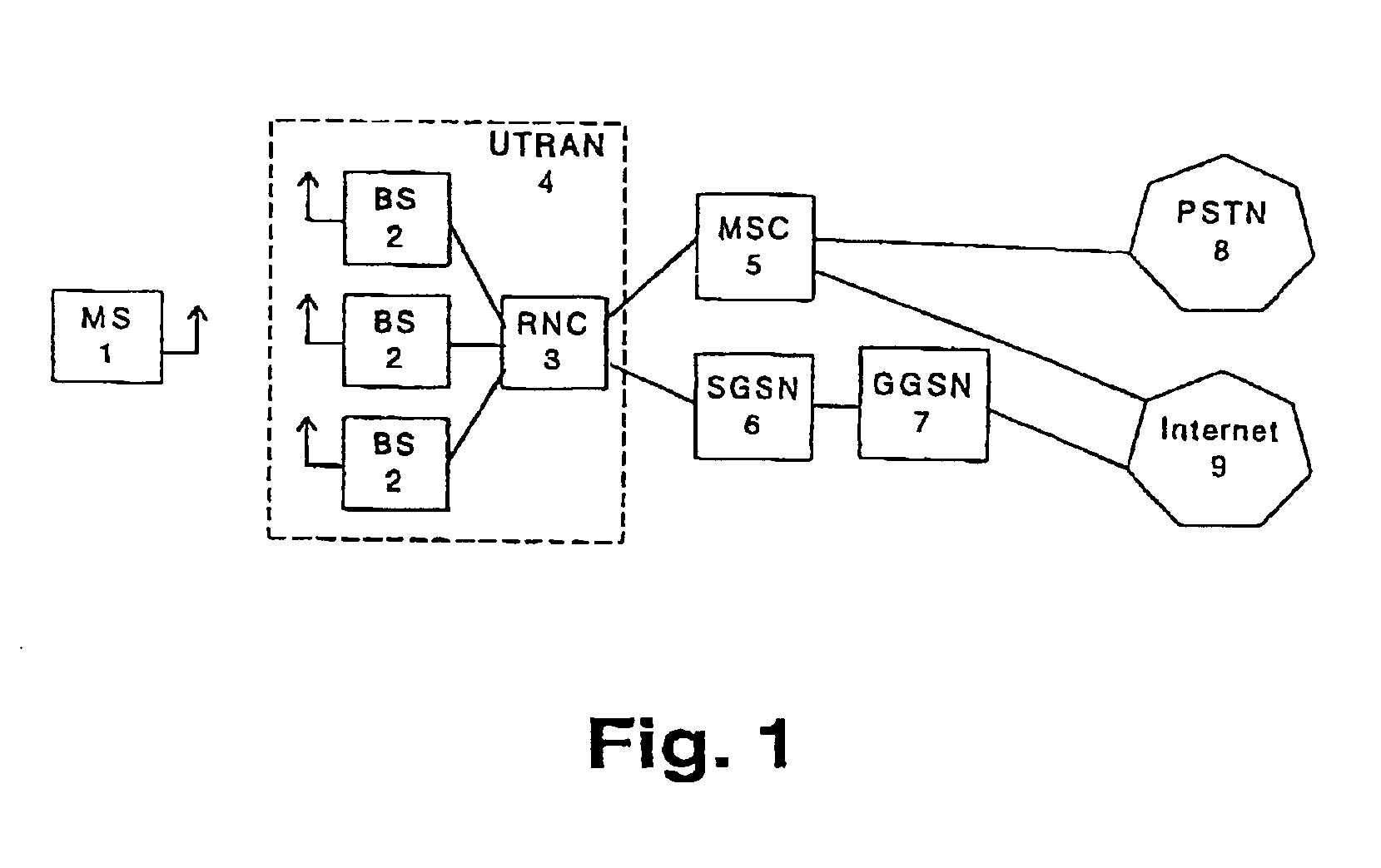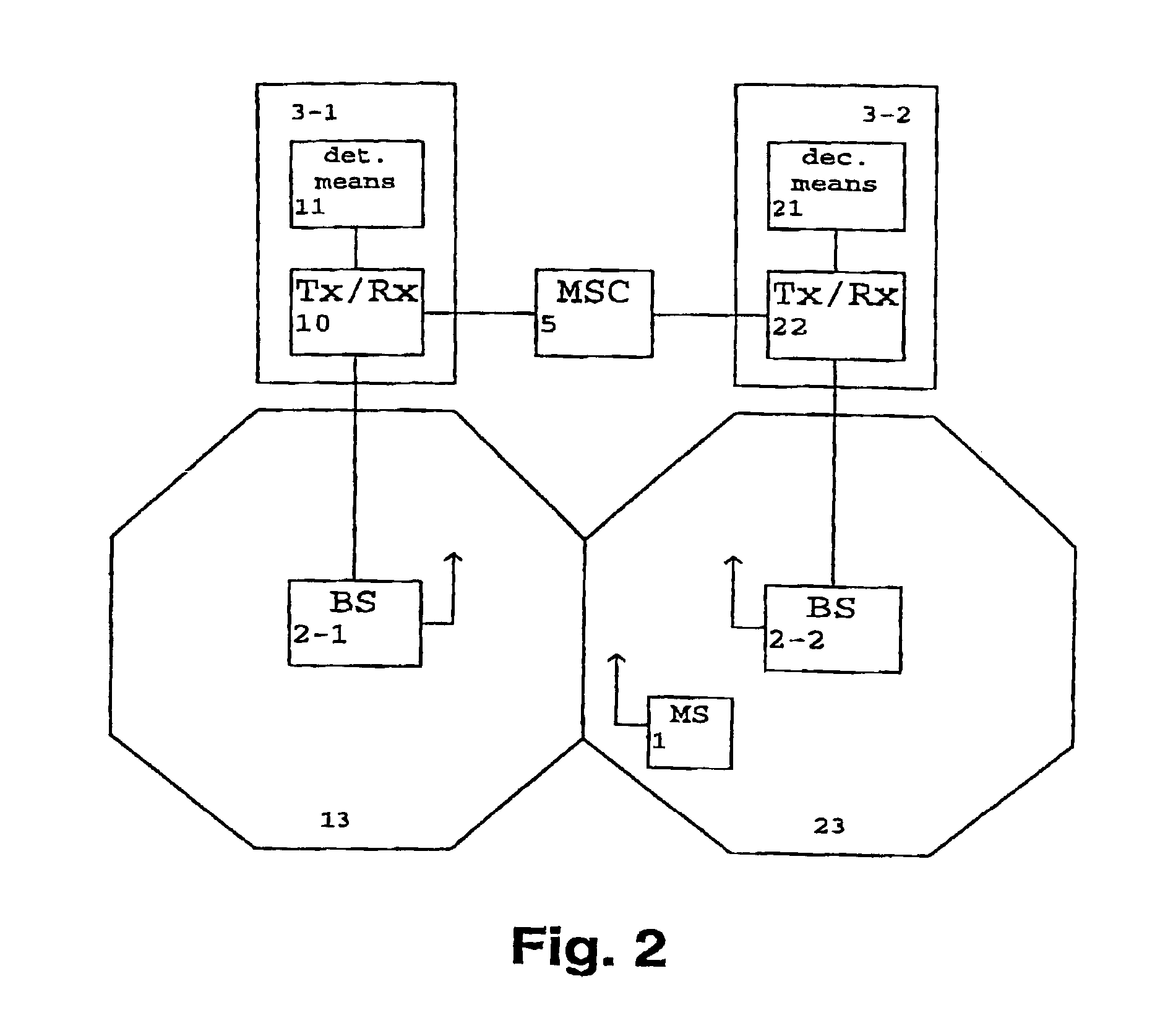Cell load control method and system
- Summary
- Abstract
- Description
- Claims
- Application Information
AI Technical Summary
Benefits of technology
Problems solved by technology
Method used
Image
Examples
Embodiment Construction
[0040]In the following, the preferred embodiment of the method and system according to the present invention will be described on the basis of a radio access system of the UMTS, as shown in FIG. 1.
[0041]According to FIG. 1, a UTRAN 4 is connected to a GPRS-based core network and to a GSM-based core network. Furthermore, a mobile station (MS) 1 is radio-connected to at least one base station (BS) 2 which is connected to a radio network controller (RNC) 3 of the UTRAN 4. In WCDMA-based systems, the MS 1 can be connected to several BS 2 simultaneously due to macrodiversity.
[0042]The RNC 3 is connected to a mobile switching center (MSC) 5 of the UNTS which provides access to a circuit switched network such as a public switched telephone network (PSTN) 8 or to a packet-switched network such as the Internet 9.
[0043]Additionally, the RNC 3 is connected to a Serving GPRS Support Node (SGSN) 6 of the UMTS. The SGSN 6 is connected to a Gateway GPRS Support Node (GGSN) 7 which provides access ...
PUM
 Login to View More
Login to View More Abstract
Description
Claims
Application Information
 Login to View More
Login to View More - R&D
- Intellectual Property
- Life Sciences
- Materials
- Tech Scout
- Unparalleled Data Quality
- Higher Quality Content
- 60% Fewer Hallucinations
Browse by: Latest US Patents, China's latest patents, Technical Efficacy Thesaurus, Application Domain, Technology Topic, Popular Technical Reports.
© 2025 PatSnap. All rights reserved.Legal|Privacy policy|Modern Slavery Act Transparency Statement|Sitemap|About US| Contact US: help@patsnap.com



